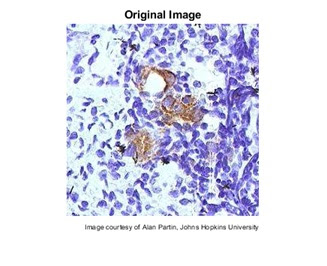Firstly HTML file:
1-Hyber Text Mutual language
2- it is an script for programming
3- this script can be Front in all page webs
4- Can divided all pages, presentations, etc. in a site web.
5- First Example:
scripting:
<HTML>
<HEAD>
<TITLE>Document Html minimum</TITLE>
</HEAD>
<BODY>texte simple hello bonjour<BR>
<B>texte en gras lumiere</B><BR>
<STRONG>texte en gras light from light</STRONG><BR>
<I>texte en italique</I><BR>
<EM>texte en italique</EM><BR>
<B><I>texte en gras et en italique</I></B><BR>
<FONT SIZE=10>texte</FONT>
<FONT COLOR="#0000FF">en bleu</FONT>
<FONT SIZE=14>Christ</FONT>
<FONT COLOR="#FF0000">en rouge Christ</FONT>
<FONT SIZE=14>Jesus</FONT>
<FONT COLOR="#FF0000">en rouge Jesus</FONT>
<FONT SIZE=20>Je suis le chemin , la verite et la vie</FONT>
<FONT COLOR="#8000FF">en violet Marina Marina</FONT>
<DIV <FONT size=10> align=left>test light in the left </FONT></DIV>
<DIV align=center>test light in the center</DIV>
<DIV align=right>test light in the right</DIV>
<DIV size=10 align=left>test source of light the christ in the left</DIV>
<DIV size =14 align=center>test sorce of light the christ jesus in the center</DIV>
<DIV size = 14 align=right>test sorce of light in light jesus christ in the right</DIV>
<H1>Les mois du printemps</H1>
<UL><LI>avril
<LI>mai
<LI>juin</UL>
<P>
<H3>Les mois d'automne</H3>
<OL><LI>octobre
<LI>novembre
<LI>décembre</OL>
<H1> Samy le bien aime par le christ jesus </h1>
<H1> Marina le bien aime par le christ jesus </h1>
<H1> Armanious Farouk le bien aime par le christ jesus </h1>
<H1> Sara le bien aime par le christ jesus </h1>
<H1> Demiana le bien aime par le christ jesus </h1>
<H2>Les composants electronique analogiques</H2>
<UL><LI>Resistance
<LI>Capacitor
<LI>Coil
<LI>Amplifecture operationnelle
<LI>Filtre RC</UL>
<P>
<H4>Les composants electroniques numeriques</H4>
<OL><LI>Gate OR-OU
<LI>Gate ET-AND
<LI>Gate OU exclusive</OL>
</p> test test test test test light is in the world and the world by him created.
</p> Par le christ jésus tous le monde il a creé en lui et par lui et avec lui notre vie amin.
<!--C'est fini-->
</BODY>
</HTML>
ended scriptting,
Output in explorer or google,..
well be as this:
6- Second Example:
<HTML>
<HEAD>
<TITLE>Document Html file script developpement</TITLE>
</HEAD>
<BODY>texte simple Hello, Bonjour, Hallo, gutentag, <BR>
<B>texte en gras Electronice and Microelectronics</B><BR>
<STRONG>texte en gras Electronics can be divided in Analog Electronice, Digital Electronics and Mixed Electronics</STRONG><BR>
<I>texte en italique Electronics components are too many</I><BR>
<EM>texte en italique Electricity, Electrical, Electronics, fields are too large in many system nowadays</EM><BR>
<B><I>texte en gras et en italique Analog Electronics means mainly analog drivers, analog systems, etc.</I></B><BR>
<FONT SIZE=10>Electronics</FONT>
<FONT COLOR="#0000FF">en bleu Electronics</FONT>
<FONT SIZE=14>Microelectronics</FONT>
<FONT COLOR="#FF0000">en rouge Microelectronics</FONT>
<FONT SIZE=14>Electricity</FONT>
<FONT COLOR="#FF0000">en rouge Electricity</FONT>
<FONT SIZE=20>The visible things and invisible things in life</FONT>
<FONT COLOR="#8000FF">en violet Electronics and microelectronics developpement</FONT>
<DIV <FONT size=10> align=left>test Electrical in the left </FONT></DIV>
<DIV align=center>test Electricity in the center</DIV>
<DIV align=right>test light in the right</DIV>
<DIV size=10 align=left>test Electronics in the left</DIV>
<DIV size =14 align=center>test sorce of all existed things in life is christ jesus in the center</DIV>
<DIV size = 14 align=right>test sorce of light in light jesus christ in the right</DIV>
<H1>Les mois du printemps</H1>
<UL><LI>avril
<LI>mai
<LI>juin</UL>
<P>
<H3>Les mois d'automne</H3>
<OL><LI>octobre
<LI>novembre
<LI>décembre</OL>
<H1>The monthes of winter</H1>
<UL><LI>DEC
<LI>JAN
<LI>FEB</UL>
<P>
<H3>The Monthes Of Summer</H3>
<OL><LI>July
<LI>Augst
<LI>september</OL>
<H2>Les composants electronique analogiques</H2>
<UL><LI>Resistance
<LI>Capacitor
<LI>Coil
<LI>Amplifecture operationnelle
<LI>Filtre RC</UL>
<P>
<H4>Les composants electroniques numeriques</H4>
<OL><LI>Gate OR-OU
<LI>Gate ET-AND
<LI>Gate OU exclusive</OL>
<H2>Tha analog components</H2>
<UL><LI>Resistance
<LI>Capacitor
<LI>Coil
<LI>operaional amplifiers
<LI>diffrential Amplifiers amplifiers
<LI>Drivers IO analog
<LI>BJT Transistors
<LI>CMOS Transistors
<LI>FET Transistors
<LI>RL Filter and so on
<LI>Filtre RC and ETC.</UL>
<P>
<H4>Les composants electroniques numeriques</H4>
<OL><LI>Gate OR-OU
<LI>Gate ET-AND
<LI>Gate OU exclusive</OL>
<H4>The Digital electronics components and modules</H4>
<OL><LI>Gate OR
<LI>Gate And
<LI>Gate Nand
<LI>Gate Nor
<LI>Gate Xor
<LI> MUX 2*2
<LI> Mux 3*8
<LI> D-Flipflops
<LI> JK-Flipflops
<LI> Buffers
<LI>Gate exclusive Or</OL>
</p> test test test test test light is in the world and the world by him created.
</p> Par le christ jésus tous le monde il a creé en lui et par lui et avec lui notre vie amin.
<!--C'est fini-->
</BODY>
</HTML>
output in explorer or google well be as this,
thank you.



































